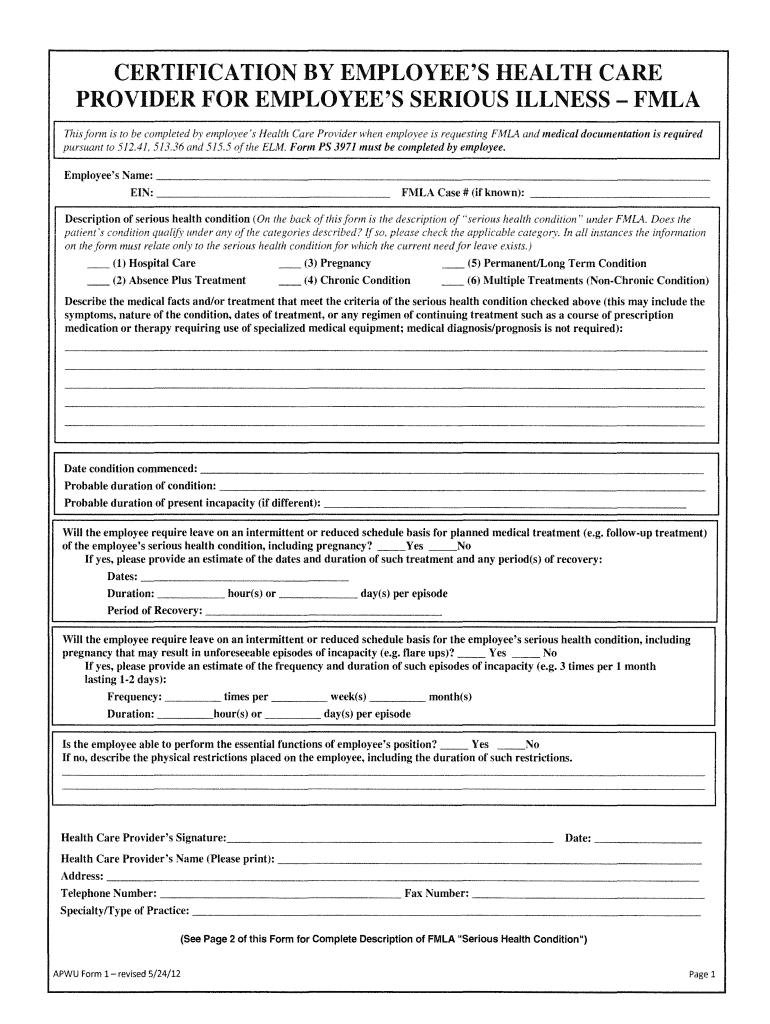FMLA Paperwork Guide for Autism: Simple Steps

If you're a parent or guardian of a child with autism, understanding and navigating the Family and Medical Leave Act (FMLA) can be a vital lifeline in ensuring your child receives the care and support they need. FMLA provides eligible employees of covered employers with unpaid, job-protected leave for specified family and medical reasons, including for the care of a child with a serious health condition. Here's a detailed guide on how to manage the FMLA paperwork for autism care.
Understanding FMLA

Before diving into the paperwork, it's essential to know:
- FMLA applies to employers with 50 or more employees within 75 miles of the employee's worksite.
- Employees must have worked for their employer for at least 12 months, with at least 1,250 hours of service in the 12 months before leave.
- Leave can be for the birth and care of a newborn child, placement of an adopted or foster child, care for an immediate family member (spouse, child, or parent) with a serious health condition, or due to the employee’s own serious health condition.
Autism is considered a serious health condition under FMLA if it results in inpatient care or continuing treatment by a healthcare provider.
The Paperwork Process

Step 1: Determine Eligibility

First, confirm your eligibility for FMLA:
- Check if your employer is covered by FMLA.
- Verify your personal eligibility through your HR department or your employer’s FMLA policy.
Step 2: Obtain the Certification of Health Care Provider Form (WH-380-F)

This form is crucial for proving that your child’s condition qualifies for FMLA leave:
- Request Form WH-380-F from your employer’s HR department or download it from the U.S. Department of Labor website.
- Fill out your part of the form and have your child’s healthcare provider complete and sign the medical certification portion.
🔍 Note: The medical provider needs to indicate how autism affects your child’s ability to perform activities of daily living, necessitating your care or supervision.
Step 3: Submit the Form

After the form is completed:
- Submit the certification form back to your HR department within 15 calendar days, unless the employer grants an extension for good reason.
⏰ Note: Your employer can deny FMLA leave if this certification is not returned within the specified timeframe.
Step 4: Plan Your Leave

Once your employer approves your FMLA leave:
- Discuss with your employer the timing and duration of your leave. FMLA leave can be taken intermittently or as a reduced leave schedule if medically necessary.
- Ensure that you and your employer agree on how the leave will impact your work schedule and duties during your absence.
Step 5: Keep Records

Maintain good records:
- Keep copies of all forms, communications with your employer, and any documentation provided by healthcare providers.
📝 Note: This documentation can be invaluable in case of disputes or if further clarification is needed by HR.
Table of FMLA Forms

| Form Name | Purpose | Where to Find |
|---|---|---|
| WH-380-E | Employee’s serious health condition | DOL Website |
| WH-380-F | Family member’s serious health condition | From employer or DOL Website |
| WH-381 | Eligibility and rights notice | From employer |

In managing FMLA for autism care, the key is preparation and understanding of the process. Ensuring that your leave request is well-documented and in line with FMLA requirements can provide peace of mind as you focus on your child's needs. Remember, this leave is not just about fulfilling legal obligations but about supporting your family during crucial times.
Can I use FMLA leave to attend therapy sessions for my autistic child?

+
Yes, FMLA can be used to take time off for medical appointments, therapy sessions, or other treatments related to your child’s serious health condition like autism.
What happens if my employer does not approve my FMLA request?

+
If your request is denied, your employer must provide a reason. You might appeal the decision or consult with legal counsel to understand your rights further.
Can I take FMLA leave on an intermittent basis?

+
Yes, if medically necessary for the care of your child with autism, FMLA allows for intermittent leave or reduced schedule leave to accommodate ongoing treatments or appointments.